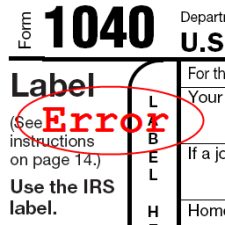Three Signs of a Healthy Business Plan
A business plan is a like a road map, charting the path your company will take as it grows over the next few years.
While many entrepreneurs dismiss their value, studies show firms with business plans are almost twice as likely to grow their company and obtain capital as those without plans.
Read on to discover the key elements of any healthy business plan.
A Clear, Brief Executive Summary Puts Info Up Front
Image Via Flickr by Victor1558
In his book The Art of the Start, Guy Kawasaki suggests, “Of the effort you put into writing a business plan, 80 per cent should go into the executive summary. These are the most important paragraphs of your organization’s existence.”
It might sound like an overstatement, but consider this. The Angel Capital Education Foundation says 90 per cent of outside equity for start-up firms comes from angel investors. This is equivalent to roughly $20 billion each year. Just a quarter of applicants make it past the pre-screening process, which generally requires the submission of an executive summary. That leaves three-quarters of applicants who don’t get to show anything more than these pages, so they’ve got to make an impression.
If you can’t say it in two pages or less, you’re saying too much. Make sure to place your value proposition at the top of the first page. This should clearly state what your company does, how it generates revenue, and why your customers will pay for your product or service. If the document is intended for investors ensure you also add the amount of money you need, and how you’ll spend it. As an executive summary requires a holistic understanding of your business, it’s best tackled last.
A Realistic Financial Review Crunches the Numbers
When creating a business plan, financial transparency is essential. You need to know how you’ve performed, how much money you hope to make, and when you can expect to make it. Balance sheets and cash-flow and profit and loss statements will create a true picture of your firm’s financial health.
It’s crucial to consider taxes when crunching your numbers too, as this will impact your figures. No matter what your small business, tax planning will help you identify tax breaks and other financial opportunities before it’s time to lodge. Remember to create statements that look at least three years ahead to show your direction.
An Action Plan That Looks to the Short- and Long-Term Future
An action plan is the final piece of the puzzle. It brings together all the strategies identified through your business plan and explains the methods you’ll use to achieve your goals. Healthy action plans consider both short and long term goals.
Kathryn Kalabokes of San Francisco’s Dream a Little Dream Events says her action plan has helped her business move forward.
“I have been able to accomplish the goals I set for myself up until the five-year goal mark from the time I developed my plan,” she says. “There are still two big ones looming on the ten-year goal list, but I’m very encouraged that I will be able to meet those goals because I have been able to meet the other ones.”
With 80 per cent of small businesses without plans failing, it’s crucial to create one that works for your firm.








